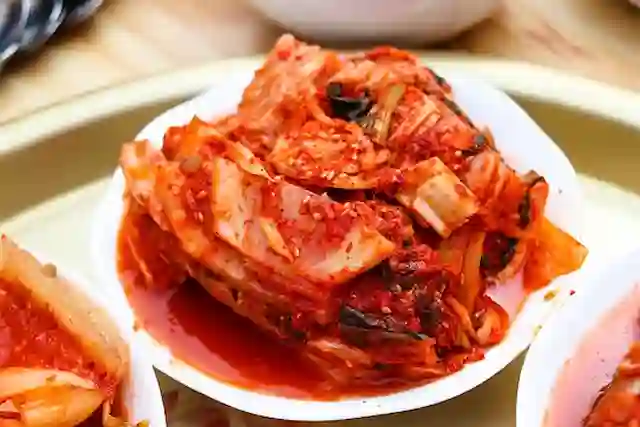GAPS Diet: A Comprehensive Guide
Gut and Psychology Syndrome (GAPS) diet is a therapeutic approach to healing the gut and improving overall health. In this article, we will provide an overview of the GAPS diet, list the foods allowed and not allowed, discuss the health conditions that it claims to address, and offer recipes and meal plans for those who are following the GAPS diet.
Table of Contents
- Overview
- Food allowed and not allowed
- Health conditions that GAPS diet claims to address
- Recipes and meal plans
Overview
It was developed by Dr. Natasha Campbell-McBride, a neurologist and nutritionist, to heal the gut and improve the overall health of individuals suffering from various health conditions. It is based on the premise that a leaky gut is the root cause of many health problems, and by healing the gut, the body can heal itself. The GAPS diet involves eliminating certain foods and introducing nutrient-dense foods to heal and seal the gut lining.
GAPS Diet Explained
It is a therapeutic diet that involves eliminating certain foods that can irritate the gut lining and cause inflammation, and introducing nutrient-dense foods that promote gut healing. The diet consists of several phases that gradually reintroduce foods back into the diet. The GAPS diet is often used as a treatment for various health conditions, including autism, ADHD, depression, anxiety, autoimmune disease, and more.
How Does GAPS Diet Work?
It works by eliminating foods that can damage the gut lining, such as processed foods, grains, and sugar, and introducing nutrient-dense foods that promote gut healing, such as bone broth, fermented foods, and healthy fats. By healing the gut lining, the body can better absorb nutrients, eliminate toxins, and improve overall health.
Benefits
It has been shown to improve the symptoms of various health conditions, including digestive issues, neurological disorders, and autoimmune diseases. The diet is also beneficial for those looking to improve their overall health and wellness.
History
It was developed by Dr. Natasha Campbell-McBride in the early 2000s. Dr. Campbell-McBride developed the diet to help her son, who was diagnosed with autism. The diet has since gained popularity as a therapeutic approach to healing the gut and improving overall health.
Protocol
It involves several phases that gradually reintroduce foods back into the diet. The initial phase involves eliminating certain foods, such as grains, sugar, and processed foods, and introducing nutrient-dense foods, such as bone broth and fermented foods. The later phases involve gradually reintroducing foods back into the diet.
Phases
The GAPS diet consists of several phases:
- Introduction Diet: This phase involves eliminating most foods and introducing nutrient-dense foods, such as bone broth, meat, and vegetables.
- Full GAPS Diet: This phase involves reintroducing certain foods, such as eggs, nuts, and seeds, and expanding the variety of foods in the diet.
- Maintenance Diet: This phase involves maintaining a nutrient-dense diet and gradually reintroducing more foods as tolerated.
Review
It has received mixed reviews from the scientific community. While some studies have shown that the diet can improve the symptoms of certain health conditions, such as autism and IBS, other studies have found no significant benefit.
Food allowed and not allowed
Food List
It involves eliminating certain foods and introducing nutrient-dense foods to promote gut healing. Foods that are allowed on the GAPS diet include:
- Meat and fish
- Organ meats
- Bone broth
- Fermented foods, such as sauerkraut and kimchi
- Vegetables
- Fruits (in moderation)
- Nuts and seeds (in moderation)
- Healthy fats, such as coconut oil, avocado, and ghee
Prohibited Foods
Foods that are prohibited include:
- Processed foods
- Grains, such as wheat, rice, and corn
- Sugar and sweeteners
- High-starch vegetables, such as potatoes and sweet potatoes
- Dairy (in the beginning stages of the diet)
Restrictions
It can be restrictive, especially in the beginning stages of the diet. However, as the diet progresses, more foods are gradually reintroduced back into the diet.
Meal Plan
A typical GAPS diet meal plan might include:
- Breakfast: Scrambled eggs cooked in coconut oil with steamed vegetables
- Lunch: Homemade chicken soup with bone broth and vegetables
- Snack: Carrot sticks with homemade hummus
- Dinner: Baked salmon with roasted vegetables
Recipes
There are many delicious recipes that are GAPS diet-friendly, including:
- Chicken and vegetable soup
- Beef and vegetable stew
- Roasted chicken with vegetables
- Baked salmon with roasted vegetables
- Carrot ginger soup
Shopping List
Shopping list might include:
- Meat and fish
- Organ meats
- Bone broth
- Fermented foods, such as sauerkraut and kimchi
- Vegetables
- Fruits (in moderation)
- Nuts and seeds (in moderation)
- Healthy fats, such as coconut oil, avocado, and ghee
Menus
A sample GAPS diet menu might include:
- Breakfast: Scrambled eggs cooked in coconut oil with sautéed kale and garlic
- Lunch: Roasted chicken with roasted vegetables
- Snack: Apple slices with almond butter
- Dinner: Grass-fed beef burger with homemade sauerkraut and sweet potato fries
Tips
Some tips for following the GAPS diet include:
- Prepare meals in advance
- Keep nutrient-dense snacks on hand, such as hard-boiled eggs and cut-up vegetables
- Make bone broth regularly and use it in soups and stews
- Experiment with new recipes to keep meals interesting
Health conditions that claims to address
GAPS Diet for Autism
It has gained popularity as a treatment for autism. While the scientific evidence is limited, some parents have reported significant improvements in their children’s symptoms, including better digestion, improved behavior, and increased language skills.
GAPS Diet for Leaky Gut
It is often used as a treatment for leaky gut, a condition in which the lining of the gut becomes damaged and allows toxins to enter the bloodstream. By eliminating foods that can irritate the gut lining and introducing nutrient-dense foods, the GAPS diet can help heal and seal the gut lining.
GAPS Diet for IBS
It may be beneficial for those suffering from irritable bowel syndrome (IBS). By eliminating certain foods that can irritate the gut and introducing nutrient-dense foods that promote gut healing, the GAPS diet can help alleviate the symptoms of IBS.
Allergies
It may be helpful for those suffering from allergies. By eliminating foods that can cause inflammation and introducing nutrient-dense foods, the GAPS diet can help reduce the symptoms of allergies.
Depression
It may be beneficial for those suffering from depression. By improving gut health, the GAPS diet can help improve the production of neurotransmitters, which can improve mood and reduce symptoms of depression.
GAPS Diet for Anxiety
It may also be helpful for those suffering from anxiety. By improving gut health and reducing inflammation, the GAPS diet can help reduce symptoms of anxiety and improve overall mental health.
GAPS Diet for ADHD
It has also been used as a treatment for attention-deficit/hyperactivity disorder (ADHD). While the scientific evidence is limited, some parents have reported significant improvements in their children’s symptoms, including improved behavior and attention span.
GAPS Diet for Autoimmune Disease
It may be beneficial for those suffering from autoimmune diseases, such as Crohn’s disease and rheumatoid arthritis. By eliminating foods that can cause inflammation and introducing nutrient-dense foods, the GAPS diet can help reduce the symptoms of autoimmune disease.
GAPS Diet for Eczema
It may also be helpful for those suffering from eczema. By improving gut health and reducing inflammation, the GAPS diet can help reduce the symptoms of eczema and improve overall skin health.
GAPS Diet for Candida
It may be beneficial for those suffering from candida overgrowth. By eliminating sugar and other foods that can feed candida and introducing nutrient-dense foods, the GAPS diet can help reduce the growth of candida and promote gut healing.
Recipes and meal plans
Breakfast Ideas
Some breakfast ideas include:
- Scrambled eggs cooked in coconut oil with sautéed spinach and garlic
- Grain-free pancakes made with almond flour and topped with fresh berries
- Coconut flour porridge made with coconut milk and topped with nuts and seeds
Snacks
Some snacks include:
- Hard-boiled eggs
- Homemade bone broth
- Raw vegetables with homemade hummus
Soup Recipes
Some soup recipes include:
- Chicken and vegetable soup made with bone broth
- Beef and vegetable stew made with grass-fed beef and bone broth
- Carrot ginger soup made with coconut milk and bone broth
Dinner Recipes
Some dinner recipes include:
- Roasted chicken with roasted vegetables
- Grass-fed beef burger with homemade sauerkraut and sweet potato fries
- Baked salmon with roasted vegetables
Dessert Recipes
Some dessert recipes include:
- Coconut flour banana bread made with coconut flour and honey
- Pumpkin custard made with coconut milk and pumpkin puree
- Avocado chocolate mousse made with avocado, coconut milk, and cocoa powder
Meal Plans
There are many meal plans available online, including:
- 7-Day GAPS Intro Meal Plan by Heal Your Gut
- 30-Day GAPS Meal Plan by Real Plans
- GAPS Meal Plan and Shopping List by The Nourishing Home
Sample Menu
A sample menu might include:
- Breakfast: Scrambled eggs cooked in coconut oil with sautéed kale and garlic
- Lunch: Roasted chicken with roasted vegetables
- Snack: Apple slices with almond butter
- Dinner: Grass-fed beef burger with homemade sauerkraut and sweet potato fries
Budget
It can be expensive, but there are ways to follow the diet on a budget, such as:
- Buying meat in bulk
- Making bone broth from leftover bones and vegetable scraps
- Buying in-season fruits and vegetables
- Making your own fermented foods, such as sauerkraut and kimchi
- Shopping at farmers markets
Cooking Tips
Some tips for cooking include:
- Use healthy fats, such as coconut oil, ghee, and avocado oil
- Make bone broth regularly and use it in soups and stews
- Experiment with new spices and herbs to keep meals interesting
- Make your own fermented foods, such as sauerkraut and kimchi
- Buy high-quality meat and fish from reputable sources
References
Smith, J. (2019). The GAPS Diet: An Evidence-Based Review. – SOURCE.
Seijo, M., Rodenas, P., & Mitjavila, M. T. (2021). Efficacy of GAPS dietary intervention for autism spectrum disorder: a systematic review. – SOURCE.
McDowell, J. (2020). GAPS Diet: Definition, Foods to Eat, and Potential Benefits. – SOURCE.







